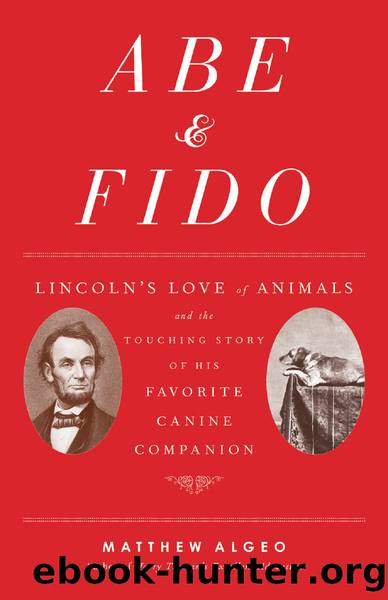Abe Fido by Algeo Matthew

Author:Algeo, Matthew [Algeo, Matthew]
Language: eng
Format: epub
Publisher: Chicago Review Press
Published: 2015-09-15T07:00:00+00:00
But even well into the nineteenth century, dogs were still prized mostly for their utilitarian value; they were not true pets in the modern sense. In fact, the word pet itself was just beginning to assume its modern usage. The word, which may be derived from petit, the French word for small, originally referred to a spoiled child. By the middle of the sixteenth century the term also referred to domesticated animals kept for pleasure, though in writing the preferred term was “favorite.”
As late as 1828, when Noah Webster published his American Dictionary of the English Language, the meaning of the word pet was still fluid. Webster said it could refer to a “lamb brought up by hand,” as well as “any little animal fondled and indulged.” By 1828 the word had also become a verb: “to treat as a pet; to fondle; to indulge.” The word could also be used as a noun to mean a fit of sulking or ill humor (e.g., to be “in a pet”).
More recently, there have been attempts to jettison the word pet altogether when it comes to referring to domesticated animals. In 2011 the Journal of Animal Ethics published an editorial calling for pet to be replaced with companion animal, and owner with human caregiver. “Despite its prevalence,” the editors wrote, “‘pets’ is surely a derogatory term with respect to both the animals concerned and their human caregivers.” The animal rights group People for the Ethical Treatment of Animals (PETA) refers to pets as companion animals, but the ASPCA is sticking with pets for now.
After the United States transitioned from subsistence agriculture to large-scale farming and mass production in the 1830s, a new American middle class began to emerge. Until then, even the most coddled dogs were still expected to earn their keep, if only by guarding the house at night. For example, Honey, Lincoln’s first dog, helped him hunt. But the new middle class ushered in the first era of true pets, animals kept solely for companionship. In the United States, the history of pet keeping correlates closely with economic advances. The emergence of a new middle class made pet keeping an affordable luxury.
By the 1850s pets were truly becoming part of the family. Owning a dog with no economic purpose was a sign of wealth, an indicator that its owner was a member of America’s new bourgeois. In return for food, shelter, and affection, a pet dog reciprocated with something its owner could not buy: status. In effect Fido was a status symbol.
In his groundbreaking 1899 work The Theory of the Leisure Class, sociologist Thorstein Veblen decried the “canine monstrosities” that served as status symbols among the wealthy in the United States in the nineteenth century. They were an example of “conspicuous consumption,” a term he coined to describe the acquisition of unnecessary luxury goods to display the buyer’s wealth.
Dogs continue to be symbols of status, especially in emerging economies. In 2014 the French news agency Agence France-Presse reported that a
Download
This site does not store any files on its server. We only index and link to content provided by other sites. Please contact the content providers to delete copyright contents if any and email us, we'll remove relevant links or contents immediately.
Einstein: His Life and Universe by Walter Isaacson(1965)
Finding Freedom: Harry and Meghan and the Making of a Modern Royal Family by Omid Scobie & Carolyn Durand(1352)
Promised Land (9781524763183) by Obama Barack(1313)
Finding Freedom by Omid Scobie(1251)
Compromised by Peter Strzok(1226)
JFK by Fredrik Logevall(1125)
Freedom by Sebastian Junger(813)
The Russia House by John Le Carré(778)
Salford Lads: The Rise and Fall of Paul Massey by Bernard O'Mahoney(732)
Day of the Dead by Mark Roberts(714)
The Irish Buddhist by Alicia Turner(713)
Kremlin Winter by Robert Service(681)
Graveyard (Ed & Lorraine Warren Book 1) by Ed Warren & Lorraine Warren & Robert David Chase(678)
A World Ablaze by Craig Harline(677)
Joe Biden: American Dreamer by Evan Osnos(646)
Flying Tiger by Samson Jack(633)
Melania and Me: The Rise and Fall of My Friendship With the First Lady by Stephanie Winston Wolkoff(613)
100 Things Successful Leaders Do by Nigel Cumberland(609)
The Mission by David W. Brown(591)
